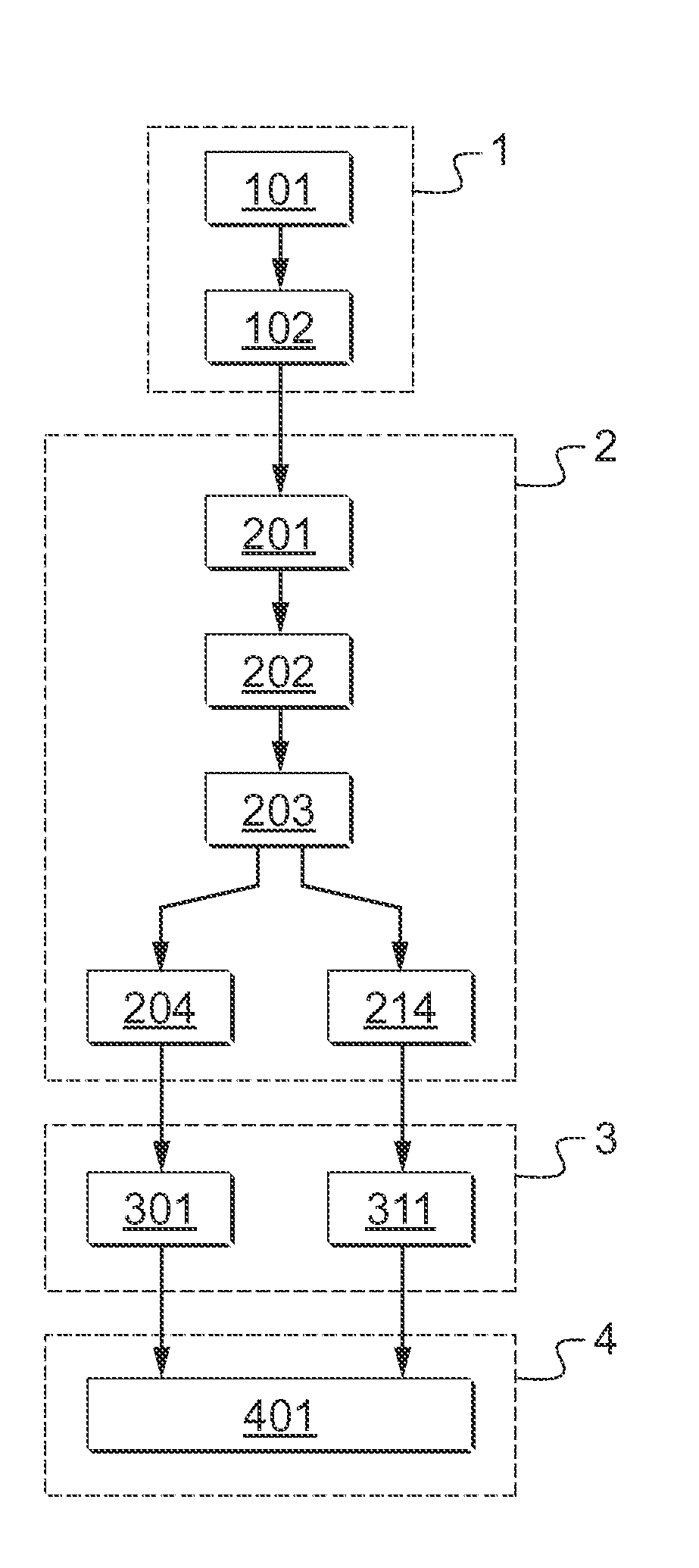Method of detecting defects of a rolling bearing by vibration analysis
a vibration analysis and bearing technology, applied in the direction of mechanical measurement arrangements, mechanical roughness/irregularity measurements, instruments, etc., can solve the problems of wear, deterioration of the operation of the bearing, and swarf coming,
- Summary
- Abstract
- Description
- Claims
- Application Information
AI Technical Summary
Benefits of technology
Problems solved by technology
Method used
Image
Examples
Embodiment Construction
[0094]FIG. 1 is a diagram summarizing the method of the invention that takes place in four main steps, each of these main steps comprising one or more substeps. The method is a method of detecting defects in a rolling bearing 10 by analyzing vibration.
[0095]An exploded view of one such bearing 10 is shown in FIG. 2. The bearing 10 comprises several components, including an inner ring 11, an outer ring 12, and a plurality of balls 13. It may also have a cage 14 serving to keep the spacing between the balls 13 constant. The balls 13 can roll between the inner and outer rings 11 and 12. Nevertheless, the balls 13 may be replaced by any other type of rolling body, e.g. by cylindrical or conical rollers, or indeed by barrel-shaped rollers.
[0096]The bearing 10 is generally part of a device for guiding a component in rotation, such as a shaft transmitting rotary motion and torque. The guide device is itself incorporated in a system, such as an engine.
[0097]Firstly, during a preliminary ste...
PUM
| Property | Measurement | Unit |
|---|---|---|
| time | aaaaa | aaaaa |
| frequency αth | aaaaa | aaaaa |
| frequency dispersion Δf | aaaaa | aaaaa |
Abstract
Description
Claims
Application Information
 Login to View More
Login to View More - R&D
- Intellectual Property
- Life Sciences
- Materials
- Tech Scout
- Unparalleled Data Quality
- Higher Quality Content
- 60% Fewer Hallucinations
Browse by: Latest US Patents, China's latest patents, Technical Efficacy Thesaurus, Application Domain, Technology Topic, Popular Technical Reports.
© 2025 PatSnap. All rights reserved.Legal|Privacy policy|Modern Slavery Act Transparency Statement|Sitemap|About US| Contact US: help@patsnap.com



